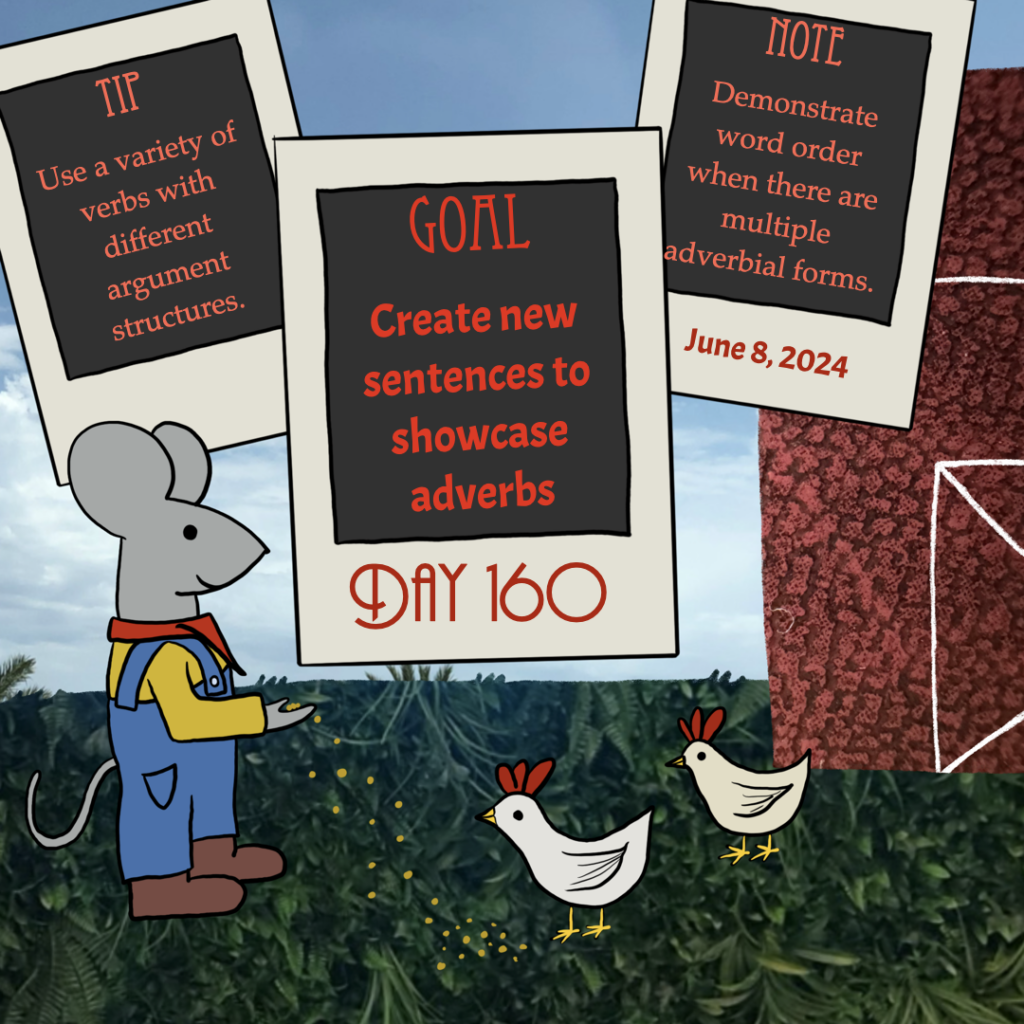
Goal: Create new sentences to showcase adverbs
Note: Demonstrate word order when there are multiple adverbial forms.
Tip: Use a variety of verbs with different argument structures.
Work focus: Create/Make/List
Today’s goal is to use your newly minted adverbs (or adverb-like forms) in sentences to showcase their form and function in context. Try to use a variety of adverbs (temporal, spatial, etc.) in a variety of combinations and in a variety of clause structures that incorporate different types of arguments. For instance, if both the object and adverb typically follow the verb, which occurs first when a clause has both? In some languages, the preferred order is verb-adverb-object, but it is verb-object-adverb in others. Of course, your language may be more flexible and allow for different orders, depending on whether a particular constituent is being pulled in focus.
My advice is to start by creating a basic clause structure with only the verb’s arguments, and then add in a single adverb to situate it relative to the verb and its arguments. Then add a second adverb (one that makes sense for the context) and situate it relative to the other adverb and the verb’s arguments. And then add a third!
Languages often have “preferred” word order when it comes to types of adverbs, such as German, where the preferred ordering is time before manner before place. That’s not to say speakers can’t rearrange those adverbs to call attention to a particular meaning, but, if all else is equal, the time-manner-place order will occur in basic clause structures when multiple adverbs occur. (You might note that, in English, we tend to push temporal adverbs to the back of the line, where “I walked quickly then” is preferred over “I walked then quickly” and “I’m running there now” is preferred over “I’m running now there”).
Add these sentences to your language document and expand your adverb section, if needed, to indicate relative ordering.
